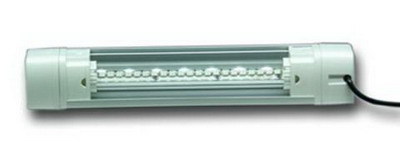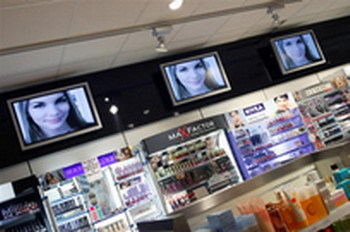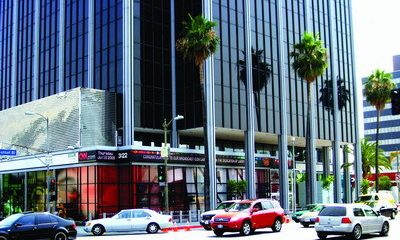I ran into a buzzsaw of conversations at ISA’s Sign Expo tradeshow in Orlando in March. There, on March 28, three representatives from World Sign Assoc. (WSA) met with some Underwriter’s Laboratories (UL) representatives for informal discussions, after a WSA-member survey evidenced concern about UL pricing and practices. WSA then contacted the Intl. Sign Assn. (ISA) and the United States Sign Council (USSC).
At the show, I heard association representatives, sign suppliers and sign companies alike complain about a doubling of rates, mandated calibration of measurement instruments that sign companies now must supply, and revocation of reputable companies’ right to apply UL labels to their own signs. Sufficient concern triggered a three-association conference call with approximately a dozen people on April 25, which, by itself, raises eyebrows.
First of all, know this. UL isn’t the government. It is an independent, product-safety certification organization that provides a service purchased by myriad governmental entities. However, National Electrical Code (NEC) regulations mandate use of a listing service, and that essentially means UL, even though the Occupational Safety and Health Administration (OSHA) recognizes 14 testing agencies. Think about things prior to the Ma Bell breakup.
Now, UL signshops must be inspected by UL field representatives four times a year. Nothing new there, but the cost for each such inspection has increased from $188 to $400. Plus, there is an annual $1,000 “graduated annual maintenance fee,” although this figure has not increased. UL said this administrative fee covers the costs of field reporting and conversations with local permit officials (authorities having jurisdiction, or AHJs).
A new potential cost is a $500 fee for a “variation notice.” This essentially says the inspected company erred, and the fee could be viewed as both a punitive fine and the cost to cover additional UL work.
Sign companies are now required to supply the instrumentation that helps determine compliance, plus they must bear the cost of having such instruments calibrated annually. One sign-company owner told me this cost him approximately $1,000.
Advertisement
UL explained that these measures aren’t sign-industry specific, but essentially across-the-board for UL. A UL spokesperson wrote: “Beginning June 15, 2006, all third-party product certifiers were required by national accreditors to invoke more detailed calibration requirements. This accreditation applies not only to UL’s equipment as part of its testing programs, but also applies to our sign-company customers because they are performing tests that require the use of three calibrated instruments to maintain compliance. The calibrated equipment will also help level the playing field, speed up inspections and get products to the market faster.”
For example, a standard test for neon transformers is the 20-lb. strain-relief test, UL said. Previously, this could be conducted using a scale or weights. Now, a scale is required.
Skepticism persists. A prominent member of the sign industry, who has served in high-ranking association positions and has served on UL panels, bluntly observed, “Everything UL does is financially driven. Their field inspectors are so inconsistent, and their lack of good judgment creates additional unnecessary costs for both sign companies and end users.”
A participant described the April 25 conference call as an “ice breaker,” but “not a bashing” of UL. The silver lining, subject matter aside, was sign-industry entities simply being on the same page. A followup conference call is slated for May 14 (while this issue is being printed).
ISA would probably spearhead any industry-wide effort. One staff person didn’t think much could be done because UL is private, and another felt diplomacy could once again work. (UL’s Lee Hewitt writes an excellent Q&A column for the ISA Report, which appears in ST in the odd months.)
Sign-industry people unanimously complained to me about inconsistent UL inspections – not knowing what to expect – and UL attributes many of the new costs to rectifying such inequities.
Advertisement
“Unfortunately, putting new approaches into place that will ensure compliance and maintain a level of integrity within the industry does not come without additional costs,” a UL spokesperson wrote. While UL prides itself for having “helped to develop not only industry-leading standards, but also the processes to help assure product compliance,” it believes the new approach will “make it so AHJs will continue to accept signs bearing the UL Listing Mark.”
UL said it has spent considerable money for additional training of field inspectors, and perfunctory inspections that formerly lasted 10 minutes would now become more thorough and likely last an hour.
Is UL’s rhetoric credible? Rarely are ISA, WSA and USSC on the same phone line. And no one wanted to be directly quoted in this editorial. Is UL the only alternative? Probably, but not absolutely.

 Tip Sheet1 week ago
Tip Sheet1 week ago
 Photo Gallery3 days ago
Photo Gallery3 days ago
 Ask Signs of the Times5 days ago
Ask Signs of the Times5 days ago
 Real Deal2 weeks ago
Real Deal2 weeks ago
 Benchmarks1 week ago
Benchmarks1 week ago
 Photo Gallery9 hours ago
Photo Gallery9 hours ago
 Women in Signs2 weeks ago
Women in Signs2 weeks ago
 Women in Signs1 week ago
Women in Signs1 week ago













